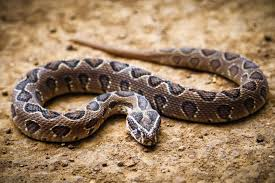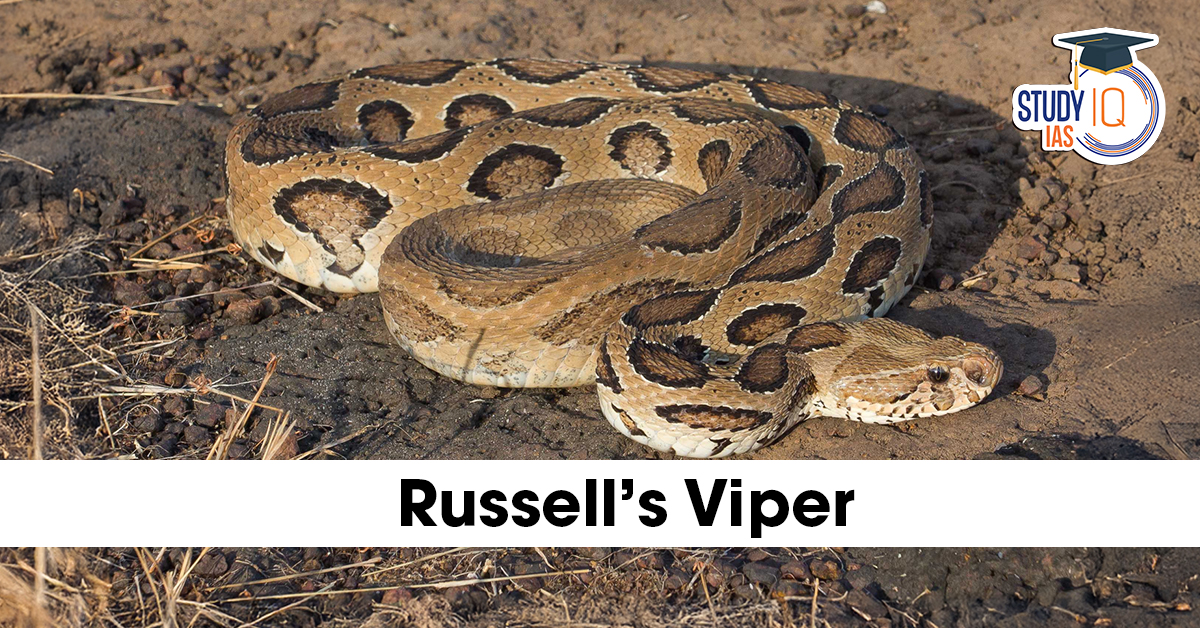Context: Researchers have found that two existing drugs, varespladib and marimastat, can effectively treat Russell’s viper bites, which cause many deaths in India.
About Russell’s Viper
- Scientific Name: Daboia russelii
- Named After: Patrick Russell, Scottish herpetologist
- Family: Viperidae (highly venomous)
- One of the “Big Four” deadliest snakes in India
(Others: Common krait, Indian cobra, Saw-scaled viper) - Major cause of snakebite deaths in India and South Asia
- Found in: India, Sri Lanka, Bangladesh, Nepal, Pakistan, Myanmar, Thailand, Cambodia, China, Taiwan, Indonesia

Habitat
- Prefers open grassy/bushy areas, scrub jungles, farmland, and plantations
- Avoids dense forests
- Often found near humans due to rodent prey and farmland presence
- Bites usually occur accidentally; they do not actively attack
Behavior & Features
- Mostly nocturnal and sedentary
- Grows up to 5 meters
- Identified by reddish-brown spots with black-white outlines
- Triangular head, small vertical-pupil eyes, and overlapping scales
- Becomes active at dusk
Danger
- Fatalities are often due to delayed treatment
- Venom affects blood coagulation and the kidneys
Conservation Status
- IUCN Red List: Least Concern


 Bonnet Macaques: Habitat, Features, Beha...
Bonnet Macaques: Habitat, Features, Beha...
 Periyar Tiger Reserve, Map, Flora, Fauna...
Periyar Tiger Reserve, Map, Flora, Fauna...
 Project Cheetah in India, Objectives, Ch...
Project Cheetah in India, Objectives, Ch...

























